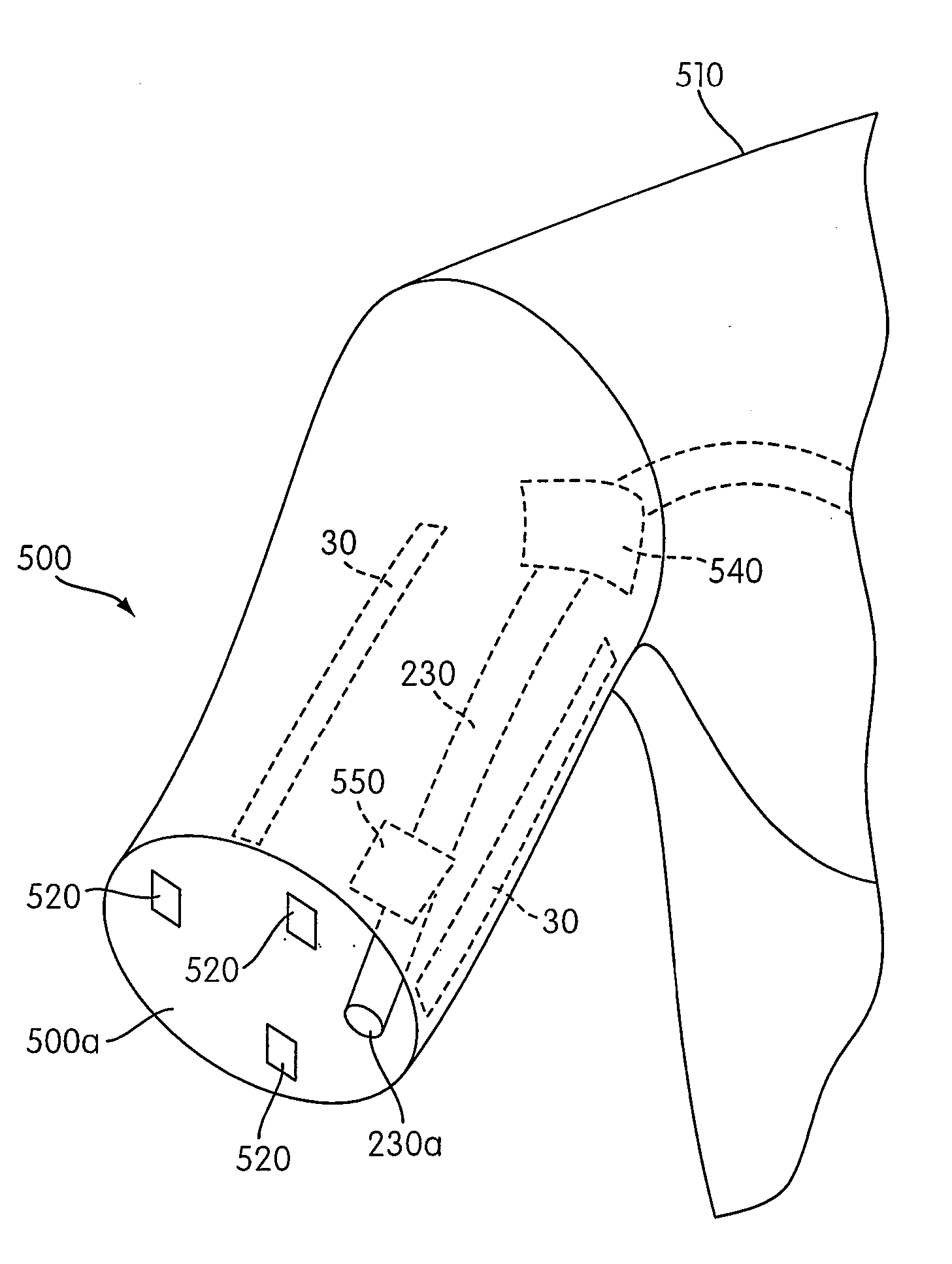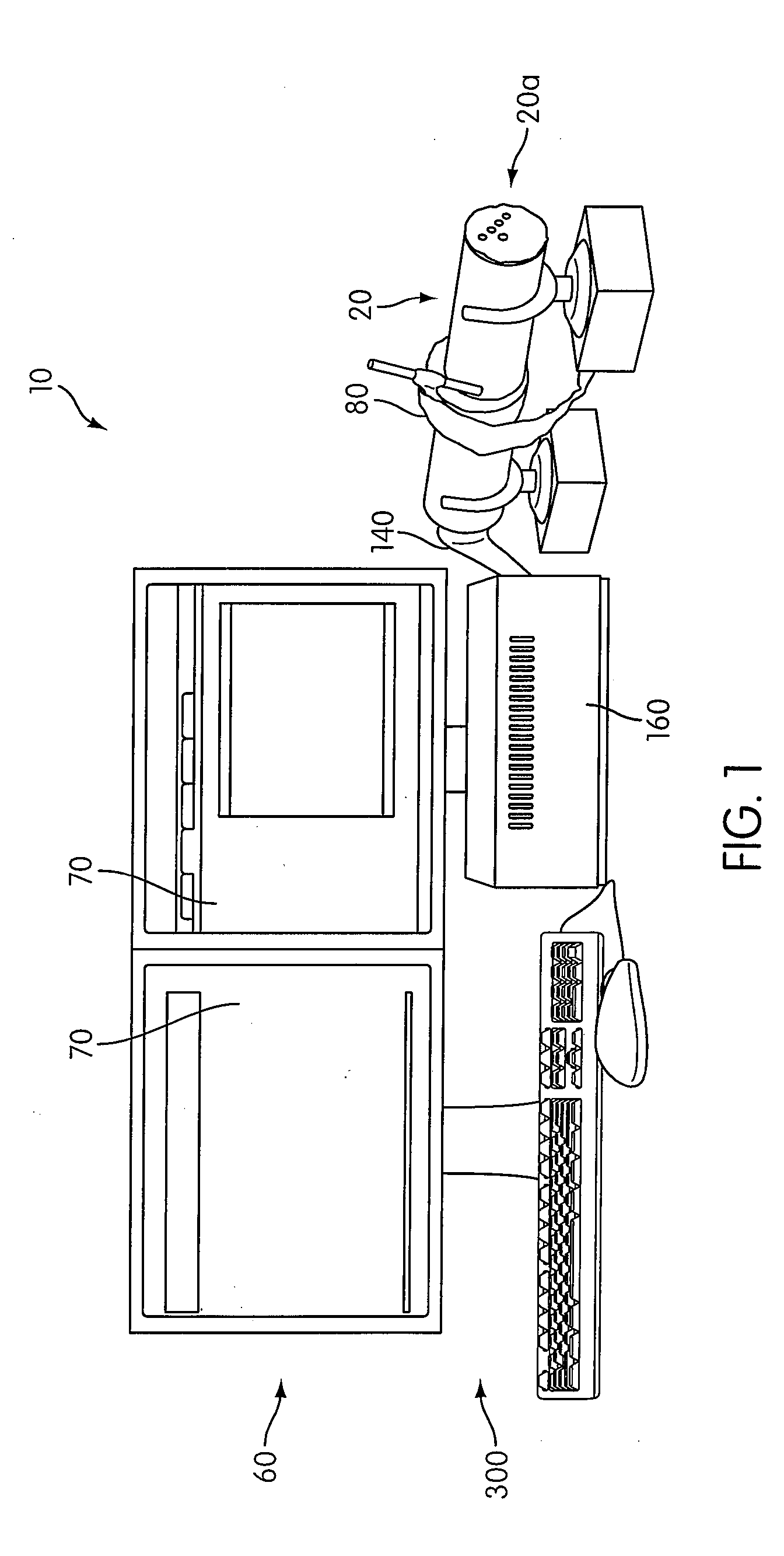Limb hemorrhage trauma simulator
a technology for trauma simulators and limbs, applied in educational models, tourniquets, instruments, etc., can solve the problems of ineffective stopping blood loss, inability to learn, and sacrifice more limbs with tourniquets than is needed to stop hemorrhaging
- Summary
- Abstract
- Description
- Claims
- Application Information
AI Technical Summary
Benefits of technology
Problems solved by technology
Method used
Image
Examples
Embodiment Construction
[0028]A limb hemorrhage trauma simulator device 10 according to an embodiment of the present invention provides didactic and hands-on training for the prehospital treatment of a hemorrhaging limb injury. The device 10 realistically simulates a wounded limb 20, providing simulated pulse and hemorrhage blood flow.
[0029]The device 10 also provides the student with a simulated scenario in which the wound occurred. The student responds to the scenario by treating the limb 20 (e.g., applying direct pressure, tourniquet, and / or wound analysis). The device 10 modifies characteristics of the simulated limb 20 such as hemorrhage flow rate and pulse in response to the medical treatment being applied by the student.
[0030]Hereinafter, the device 10 is described with reference to FIGS. 1-4. The device 10 comprises the simulated limb 20, a plurality of pressure sensors 30, a pulse simulator 40, a hemorrhage simulator 50, a controller 60, a display 70, and a tourniquet 80.
[0031]As shown in FIG. 2, ...
PUM
 Login to View More
Login to View More Abstract
Description
Claims
Application Information
 Login to View More
Login to View More - R&D
- Intellectual Property
- Life Sciences
- Materials
- Tech Scout
- Unparalleled Data Quality
- Higher Quality Content
- 60% Fewer Hallucinations
Browse by: Latest US Patents, China's latest patents, Technical Efficacy Thesaurus, Application Domain, Technology Topic, Popular Technical Reports.
© 2025 PatSnap. All rights reserved.Legal|Privacy policy|Modern Slavery Act Transparency Statement|Sitemap|About US| Contact US: help@patsnap.com



